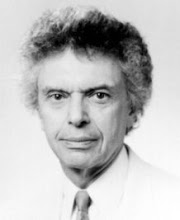Cooperation and Division of Labor
Gendered Division Of Labor Gave Modern Humans Advantage Over Neanderthals
Diversified social roles for men, women, and children may have given Homo sapiens an advantage over Neanderthals, says a new study in the December 2006 issue of Current Anthropology. The study argues that division of economic labor by sex and age emerged relatively recently in human evolutionary history and facilitated the spread of modern humans throughout Eurasia.
"The competitive advantage enjoyed by modern humans came not just from new weapons and devices but from the ways in which their economic lives were organized around the advantages of cooperation and complementary subsistence roles for men, women, and children," write Steven L. Kuhn and Mary C. Stiner (University of Arizona).
Kuhn and Stiner note that the rich archaeological record for Neanderthal diets provides little direct evidence for a reliance on subsistence foods, such as milling stones to grind nuts and seeds. Instead, Neanderthals depended on large game, a high-stakes resource, to fuel their massive body mass and high caloric intake. This lack of food diversity and the presence of healed fractures on Neanderthal skeletons--attesting to a rough-and-tumble lifestyle--suggest that female and juvenile Neanderthals participated actively in the hunt by serving as game drivers, beating bushes or cutting off escape routes.
The Middle Paleolithic Neanderthal record also lacks the artifacts commonly used to make weather-resistant clothing or artificial shelters, such as bone needles. Thus, it was the emergence of "female" roles -- subsistence and skill-intensive craft -- that allowed H. sapiens in ecologically diverse tropical and sub-tropical regions to take advantage of other foods and live at higher population densities.
"Earlier hominins pursued more narrowly focused economies, with women's activities more closely aligned with those of men with respect to schedule and ranging patterns," write the authors. "It is impossible to argue that [Neanderthal] females and juveniles were fulfilling the same roles--or even an equally diverse suite of economic roles--as females and juveniles in recent hunter-gatherer groups," they add.
While some degree of niche specialization between adult male and females is documented for many large-mammal species, recent humans are remarkable for cooperative economies that combine pervasive sharing and complementary roles for individuals of different ages and sexes.
Sponsored by the Wenner-Gren Foundation for Anthropological Research, Current Anthropology is a transnational journal devoted to research on humankind, encompassing the full range of anthropological scholarship on human cultures and on the human and other primate species. Communicating across the subfields, the journal features papers in a wide variety of areas, including social, cultural, and physical anthropology as well as ethnology and ethnohistory, archaeology and prehistory, folklore, and linguistics.
Kuhn, Steven L. and Mary C. Stiner, "What's a Mother to Do" The Division of Labor among Neanderthals and Modern Humans in Eurasia." Current Anthropology 47:6.
From http://www.sciencedaily.com/releases/2006/12/061204123302.htm Thanks to Dr. Pete Gambino for this link. Visit his web site at http://www.drpetergambino.com.
Diversified social roles for men, women, and children may have given Homo sapiens an advantage over Neanderthals, says a new study in the December 2006 issue of Current Anthropology. The study argues that division of economic labor by sex and age emerged relatively recently in human evolutionary history and facilitated the spread of modern humans throughout Eurasia.
"The competitive advantage enjoyed by modern humans came not just from new weapons and devices but from the ways in which their economic lives were organized around the advantages of cooperation and complementary subsistence roles for men, women, and children," write Steven L. Kuhn and Mary C. Stiner (University of Arizona).
Kuhn and Stiner note that the rich archaeological record for Neanderthal diets provides little direct evidence for a reliance on subsistence foods, such as milling stones to grind nuts and seeds. Instead, Neanderthals depended on large game, a high-stakes resource, to fuel their massive body mass and high caloric intake. This lack of food diversity and the presence of healed fractures on Neanderthal skeletons--attesting to a rough-and-tumble lifestyle--suggest that female and juvenile Neanderthals participated actively in the hunt by serving as game drivers, beating bushes or cutting off escape routes.
The Middle Paleolithic Neanderthal record also lacks the artifacts commonly used to make weather-resistant clothing or artificial shelters, such as bone needles. Thus, it was the emergence of "female" roles -- subsistence and skill-intensive craft -- that allowed H. sapiens in ecologically diverse tropical and sub-tropical regions to take advantage of other foods and live at higher population densities.
"Earlier hominins pursued more narrowly focused economies, with women's activities more closely aligned with those of men with respect to schedule and ranging patterns," write the authors. "It is impossible to argue that [Neanderthal] females and juveniles were fulfilling the same roles--or even an equally diverse suite of economic roles--as females and juveniles in recent hunter-gatherer groups," they add.
While some degree of niche specialization between adult male and females is documented for many large-mammal species, recent humans are remarkable for cooperative economies that combine pervasive sharing and complementary roles for individuals of different ages and sexes.
Sponsored by the Wenner-Gren Foundation for Anthropological Research, Current Anthropology is a transnational journal devoted to research on humankind, encompassing the full range of anthropological scholarship on human cultures and on the human and other primate species. Communicating across the subfields, the journal features papers in a wide variety of areas, including social, cultural, and physical anthropology as well as ethnology and ethnohistory, archaeology and prehistory, folklore, and linguistics.
Kuhn, Steven L. and Mary C. Stiner, "What's a Mother to Do" The Division of Labor among Neanderthals and Modern Humans in Eurasia." Current Anthropology 47:6.
From http://www.sciencedaily.com/releases/2006/12/061204123302.htm Thanks to Dr. Pete Gambino for this link. Visit his web site at http://www.drpetergambino.com.


<< Home